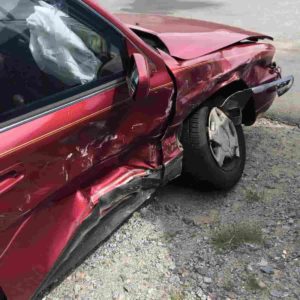From accidents to theft to weather-related damage, owning a vehicle comes with its fair share of risks. This is why all drivers in California are required to carry proof of financial responsibility, which usually comes in the form of car insurance. But even if you have insurance, one small mistake during the claims process could lead to a dispute from the insurance company or the opposing party.
All drivers should know what to expect when filing a claim and how to give their claim the best chance of success. Here’s a brief overview of the car insurance claims process in California:
1. Gather Information at the Scene
The more information you can provide the insurance company, the easier it will be to process your claim. Gathering information at the scene can help you avoid unnecessary delays, which will be crucial if you incur significant medical bills or lost wages.
Be sure to record the names, phone numbers, license plates, driver’s license numbers, and insurance information of everyone involved in the collision. You should also jot down the names of eyewitnesses; their testimony may help you prove negligence and liability.

The evidence you gather at the accident scene could have a profound impact on the outcome of your car insurance claim.
2. Take Photos and Get an Accident Report
Photographs can be valuable evidence after a car accident. If you and the other party disagree on the events that led to the collision, photos provide insight into what actually happened. Be sure to capture shots of skid marks, the positions of vehicles, property damage, injuries, and the intersection (if applicable).
The police report is also a crucial piece of evidence. In fact, insurance companies usually rely on this document above all else to determine liability. After any accident, you should contact the police and ask an officer to create a report. Be sure to ask the officer how to obtain a copy of the report.
3. Seek Medical Attention
Even if you were treated at the scene, it’s a good idea to visit your doctor immediately after any collision. Medical documents will help you tie your injuries to the crash. If you put off your medical evaluation, the insurance company or opposing party may contend that your own negligence contributed to the severity of your injuries or that they were not caused in the accident.
4. Call Your Insurance Company
After you seek medical attention, which is always the most important step to take after an accident, contact your insurance company to report the collision. Your provider will ask you a series of questions about the accident and will explain in detail what you can expect during the claims process.
You will also have to contact the California Department of Motor Vehicles. State law requires all drivers involved in a collision that results in $1,000 in property damage, an injury, or death to submit a SR 1 traffic report within 10 days.
The most important thing to remember after any collision is to remain calm and stay organized. The claims process can be long and stressful, but if you carry insurance and follow the above steps, you should be able to recover the compensation you deserve and move on with life.
